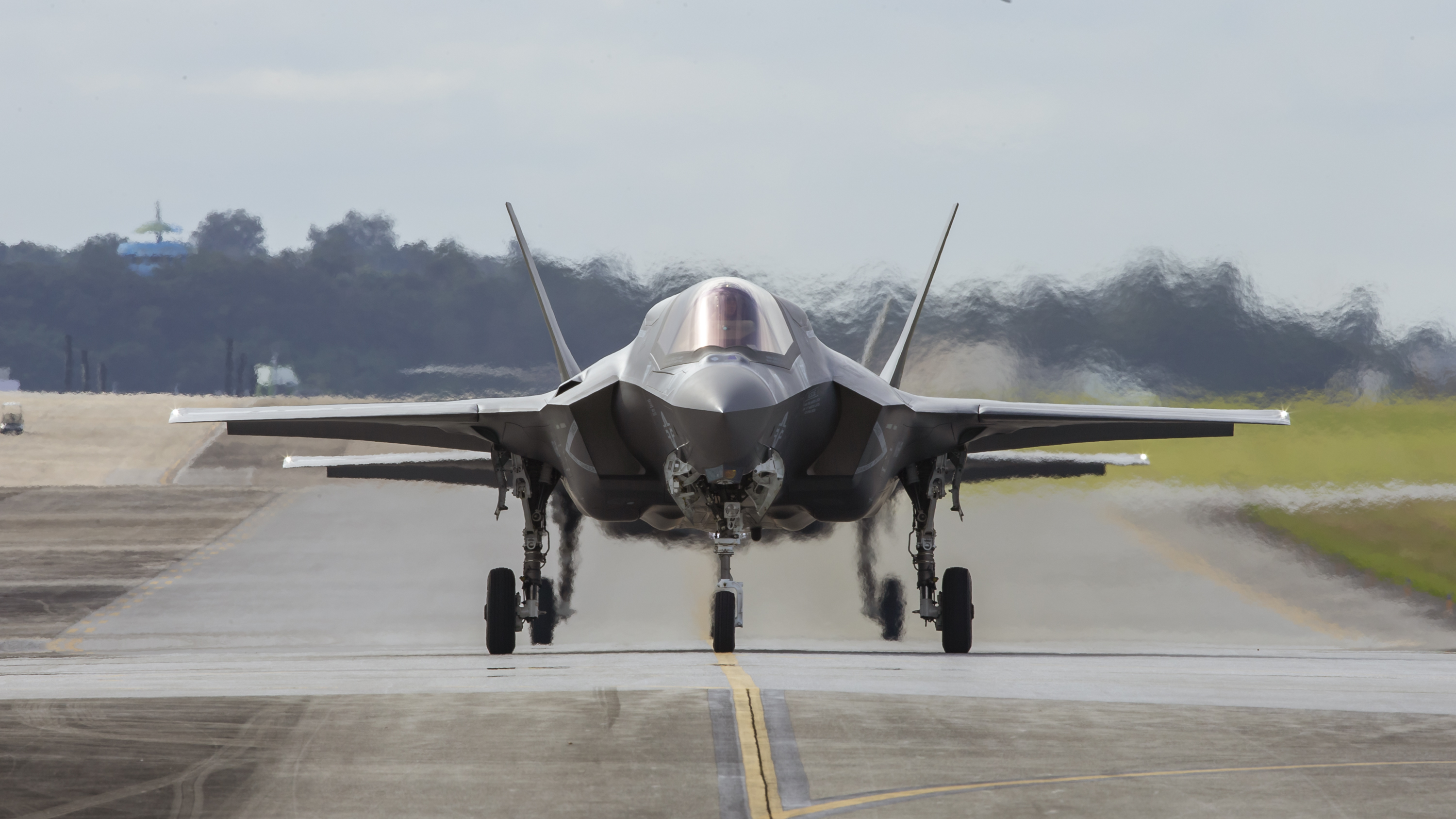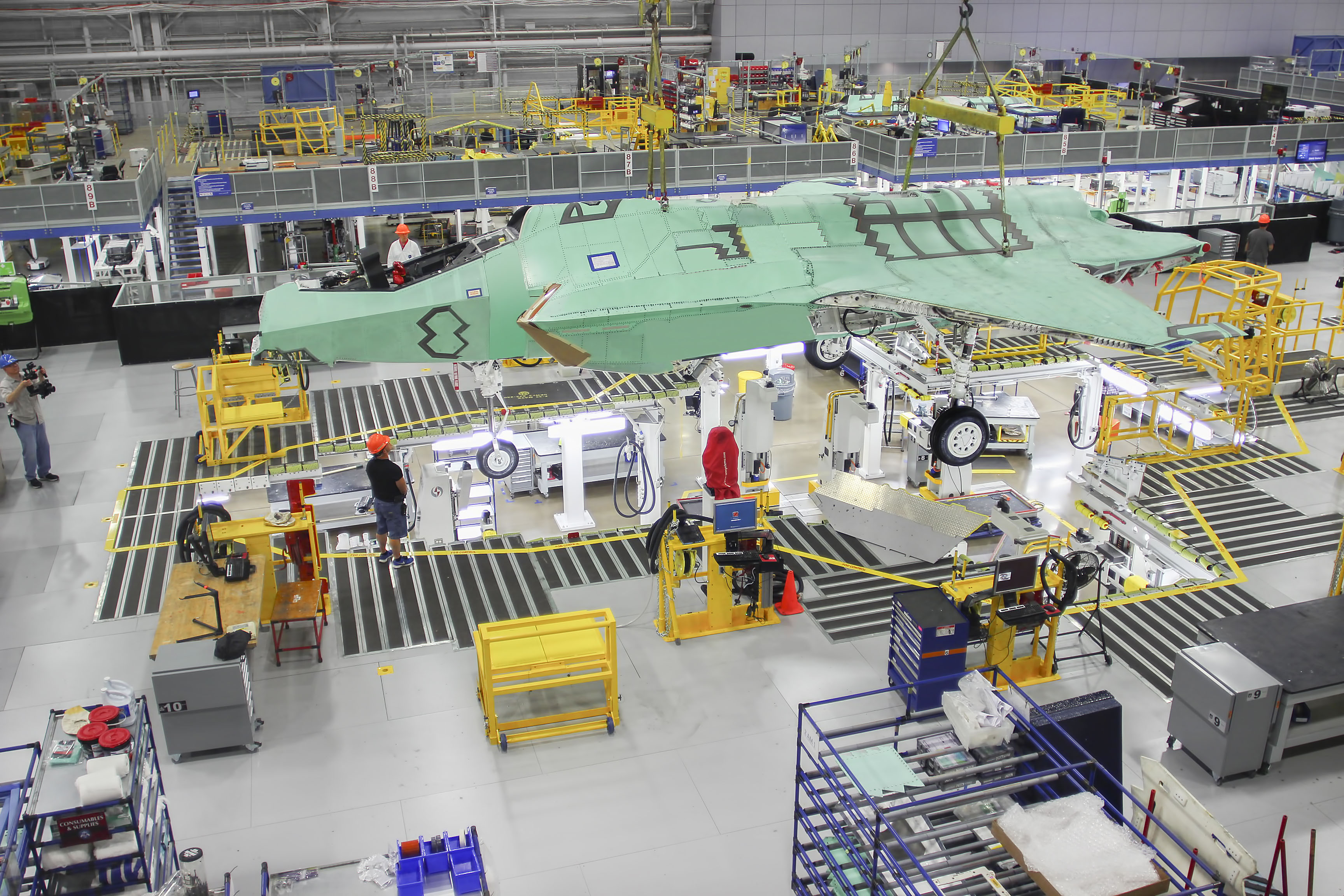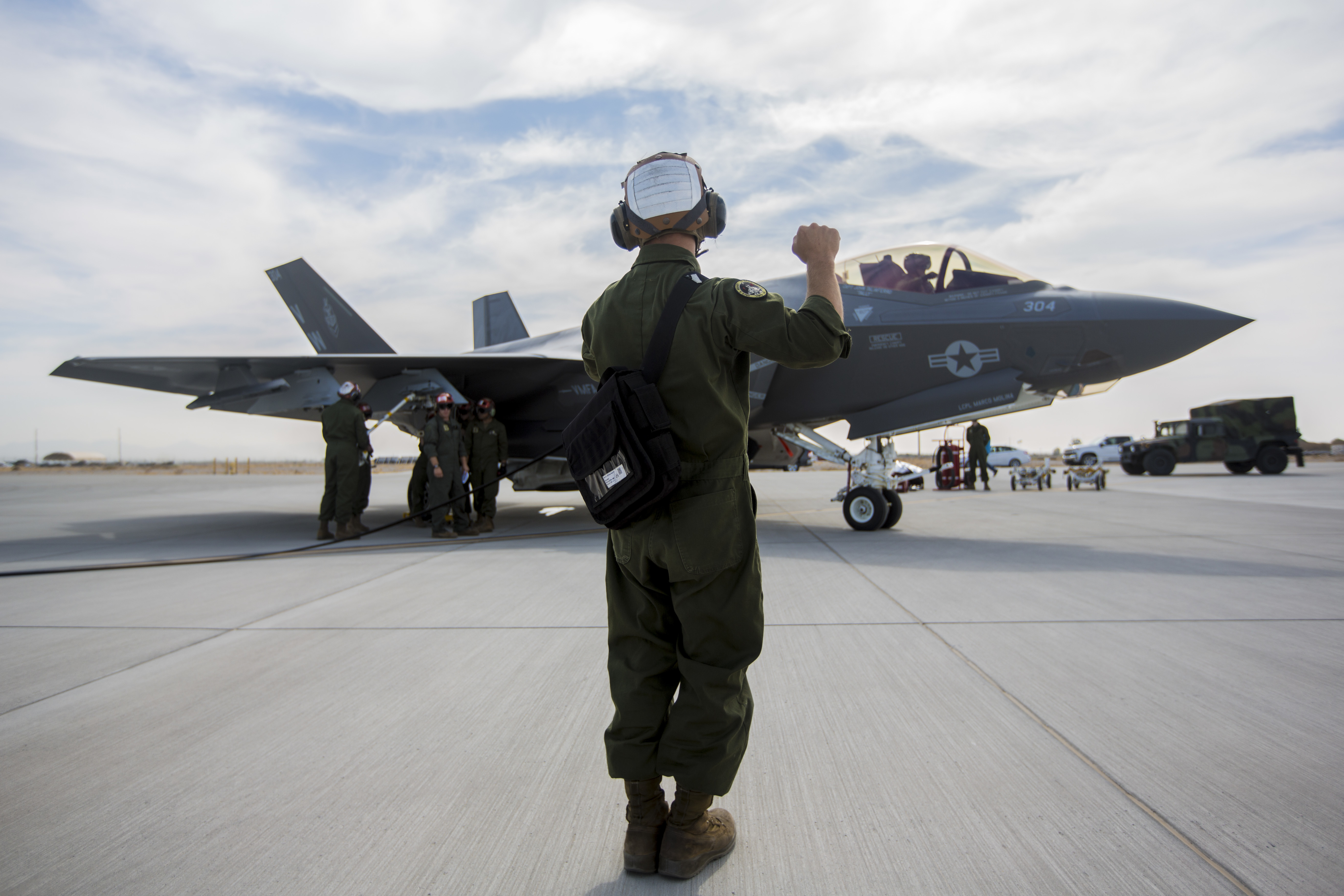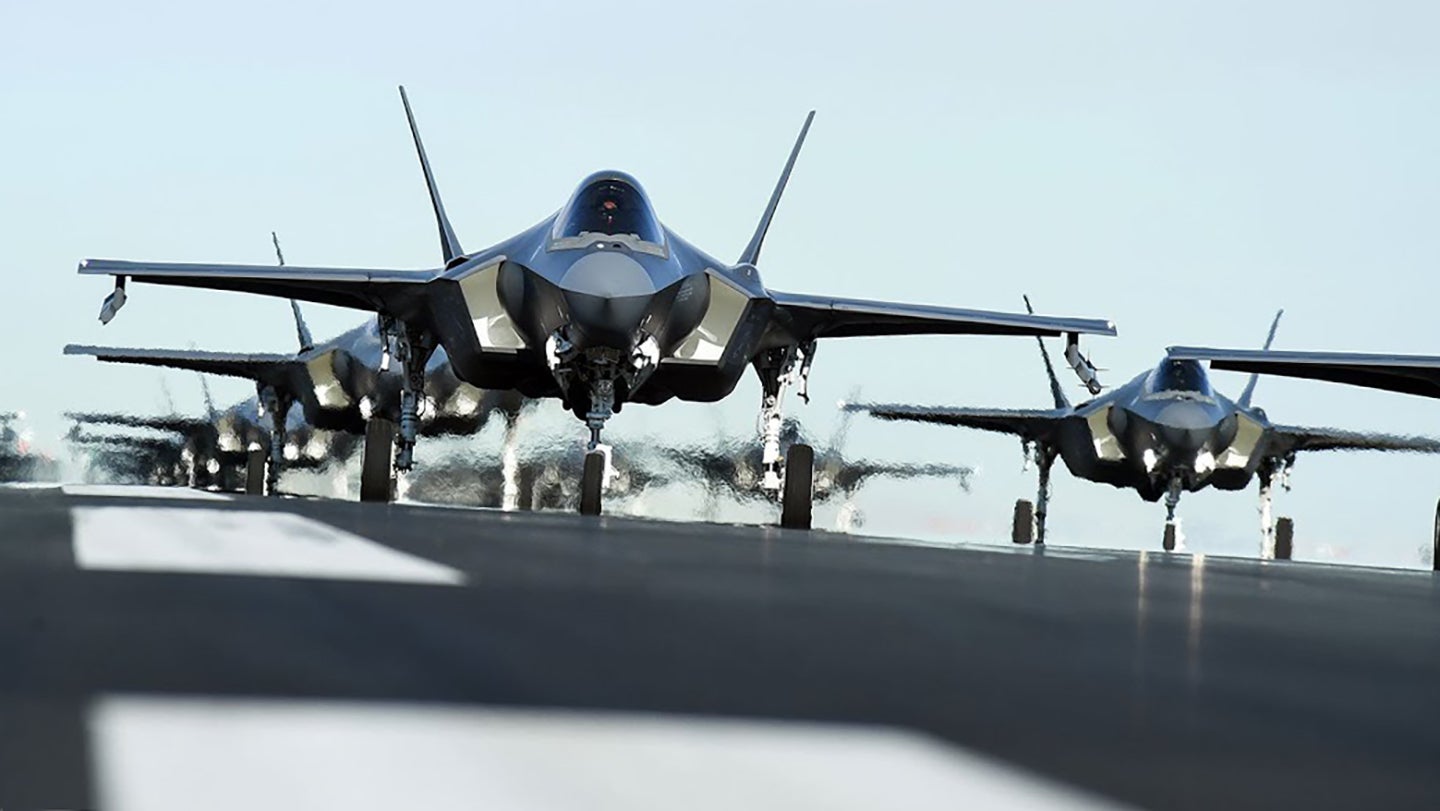In a setback for the Lockheed Martin F-35 stealth fighter program, the U.S. Department of Defense has formally decreed that a decision on full-rate production of the jet is on indefinite hold. The Milestone C decision on whether or not to ramp up the manufacture of Joint Strike Fighters had been due in or before March 2021, but has now been on hold pending completion of the final phase of operational testing of the F-35.
Bloomberg was first to report news of the verdict, which was made by Ellen Lord, the Under Secretary of Defense for Acquisition and Sustainment in the Trump administration. There had been previous suggestions that a delay was at least likely, before today’s official confirmation.

While more than 600 F-35s have been manufactured so far by the Joint Strike Fighter enterprise, including 123 examples delivered in 2020, wrapping up the Initial Operational Test & Evaluation (IOT&E) is a formal requirement before the formal launch of full-rate production. Once that happens, it will signal that the Pentagon officially has confidence in the program’s maturity and that the jet is able to perform as required in all operational conditions. Ultimately, the manufacturing run of the F-35 could reach 3,200 aircraft, depending on different nations’ requirements and emerging new customers. The U.S. Air Force alone has a program of record to eventually buy 1,763 conventional takeoff and landing F-35As, 241 of which had been delivered as of last summer.
Furthermore, the production-related milestone is supposed to confirm that the F-35 meets maintenance requirements, which have fallen short in the past, and that the manufacturing effort is running efficiently. This year, the effects of the COVID-19 pandemic mean that fewer F-35s have been delivered than was originally planned.
The latest hiccup in the F-35 program is a result of delays to operational testing in the Joint Simulation Environment. The F-35 needs to prove itself in these trials in order to complete the IOT&E phase and kickstart the full-rate production review.
This a critical, roughly month-long testing phase was originally supposed to begin in 2017. That schedule subsequently slipped and there had been a hope that those trials would begin this month. Now, the F-35 is not likely to enter the Joint Simulation Environment until mid-to-late 2021.
Jessica Maxwell, Lord’s spokeswoman, told Bloomberg that the latest holdup on operational testing came about due to “technical challenges and the impact of COVID-19.” This indicates that the completion of the Joint Simulation Environment facility at Naval Air Station Patuxent River, Maryland, is running behind schedule. The site is required to assess the jet’s ability to counter high-end air defense systems, including aircraft and missiles likely to be fielded in the next 10 years.
Maxwell said an “independent technical review” is now required before a revised timeline can be announced, with low-rate initial production (LRIP) of F-35s to continue in the meantime. The first LRIP contract for the Joint Strike Fighter, covering just two F-35As, was signed back in 2007.

Pushing out the full-rate production determination means that the Milestone C decision will fall to President-elect Joe Biden’s Administration. Even once operational testing is complete, another two to three months will be needed to analyze all the data gathered and prepare a report for the Pentagon, on which to base the decision.
Laura Seal, an F-35 program spokeswoman, told Bloomberg that revised dates for both the Joint Simulation Environment tests and the potential full-rate production decision could be announced by the end of February 2021.
The Pentagon delaying the Milestone C decision is the latest complication to afflict the F-35 program, which only completed the previous System Development and Demonstration (SDD) phase in 2018 and did so only after the Joint Program Office had deleted a number of test points in order to meet its goals. Despite this, the 10-year-long SDD effort still failed to meet the much-revised schedule.

All three F-35 variants have in the past been plagued by a litany of deficiencies, including performance limitations, difficulties operating in extreme weather, dangerous cockpit pressure incidents, faults in the helmet-mounted display, serious safety concerns in the event of a blown tire, and more.
In January this year, a report from the Office of the Director of Operational Test & Evaluation confirmed that the F-35 still had 873 unresolved deficiencies, with new problems emerging on a regular basis.
Admittedly, even under low-rate initial production, the F-35 is being produced in significant numbers and it has now declared initial operational capability with nine nations and has been employed in combat by three of them. The manufacturing schedule for 2020 originally anticipated 140 units, compared to 180 aircraft when Joint Strike Fighter production hits its anticipated peak production rate in 2024.
However, the continued failure to complete IOT&E — and in turn trigger a full-rate production decision — means that question marks will continue to hang over the viability of the jet, especially in the kinds of high-end warfare scenarios in which the F-35 is anticipated to fight for decades to come.
Contact the author: thomas@thedrive.com
